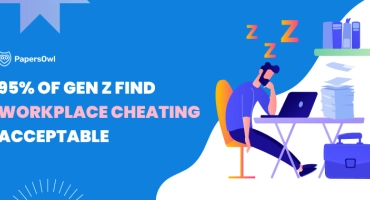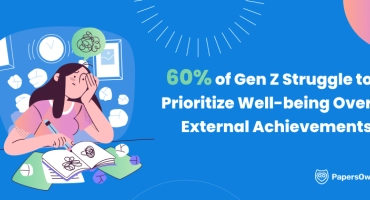Intersectionality in corporate culture: where inclusion crosses paths with the business highway
Table of contents
When we talk about inclusion and diversity in the workplace, many organizations claim commitment, yet meaningful change often requires deeper introspection. At the heart of genuine inclusivity is intersectionality, understanding how overlapping identities affect employees’ experiences. As Pride Month unfolds, it’s an essential moment to reflect on celebrating LGBTQ+ identities, and also address the nuanced layers that shape their workplace realities.
To better understand these dynamics, we surveyed 2,000 LGBTQ+ individuals aged 18-34 across the U.S. What we found offers valuable insights into the challenges, strengths, and realities they face at work today.
Key Findings:
- 45% of LGBTQ+ young people choose employers based on LGBTQ-friendliness.
- For LGBTQ+ people of color, willingness to come out at work isn’t tied directly to personal comfort with their LGBTQ+ identity. For white LGBTQ+ individuals, it typically is.
- 26% of respondents have been asked to “tone down” their queerness at work.
Choosing Inclusive Workplaces
Organizations can no longer afford surface-level inclusion; LGBTQ+ individuals expect and deserve deeper commitments. Our survey indicates that nearly half of LGBTQ+ young people prioritize LGBTQ-friendliness in choosing an employer.
Clearly, corporate responsibility goes beyond branding—it has tangible impacts on recruitment, retention, and reputation.

Intersectionality Matters
Intersectionality, a term coined by sociologist Kimberlé Crenshaw, highlights how different identities such as race, gender, and sexuality intersect to create distinct experiences of discrimination or privilege.
Within the LGBTQ+ community, intersectionality profoundly affects employment opportunities and security. Our data highlights these disparities, especially concerning intersectional identities and employment status, with employment rates being nearly twice as low for disabled LGBTQ+ individuals compared to their able-bodied counterparts.

Representation, Leadership, and Intersectionality
When viewed through an intersectional lens, gender disparities become even clearer. Despite LGBTQ+ women comprising 5.1% of the U.S. workforce, their representation sharply declines from entry-level roles (2.3%) to senior leadership (0.6%). This stark contrast with LGBTQ+ men’s relatively stable representation underscores the compounded discrimination faced by LGBTQ+ women.

Representation profoundly impacts workplace inclusivity, particularly at senior levels.
Representation matters because visibility in leadership roles validates individual identities and shapes organizational culture.
Yet, among Fortune 500 companies, LGBTQ+ representation remains alarmingly low.

With only 4 openly LGBTQ+ CEOs and 36 LGBTQ+ board members out of over 5,500 seats, such limited visibility restricts opportunities for LGBTQ+ individuals and suggests organizations are missing crucial perspectives in their leadership.

Transparency and Safety
A significant indicator of workplace inclusivity is employees’ comfort with disclosing their identities. 34% of LGBTQ+ individuals have openly shared their identities with supervisors, while 42% plan to. However, a notable 24% categorically refuse disclosure, signaling persistent fears about potential repercussions or alienation. Transparency thus depends significantly on fostering a supportive and safe organizational culture.

Unfortunately, transparency isn’t always voluntary. Alarmingly, 15% reported feeling pressured to disclose their gender identity or sexual orientation during job interviews. While companies may appear to uphold a policy of non-discrimination during interviews, the reality often reveals a disconnect, as evidenced by the even higher percentages of pressure faced by employees once they are hired.

26% reported being asked implicitly or explicitly to “tone down” their queerness at work. Such requests compromise personal authenticity and psychological safety.

Comfort and Authenticity
Intersectional identity also influences comfort with openly discussing LGBTQ+ identity at work — but not in the way you might expect.
LGBTQ+ people of color often find it easier to come out, even when less comfortable with their non-cis-hetero identity, due to support from other minority groups to which they belong and their existing familiarity with navigating minority status. In contrast, for white LGBTQ+ individuals, openness about sexuality correlates more directly with their personal comfort level with their identity.

Concealing identities remains a common workplace strategy, particularly where intersectional pressures adds to vulnerability. Nearly half (46%) of LGBTQ+ employees have used neutral language, such as referring to their significant other as “partner” to avoid disclosing their gender.

Creating inclusive workplaces requires more than rainbow logos during Pride Month. It demands comprehensive understanding and genuine intersectional awareness. Organizations must acknowledge the unique, intersecting experiences LGBTQ+ employees face. True inclusivity lies in ongoing, committed action. The future of workplace equality isn’t just inclusive—it’s intersectional.
Methodology: Researchers from PapersOwl surveyed 2,000 members of Generation Z and young Millennials to compile this study. Randomly selected participants were asked to discuss their experiences, with no emphasis on a specific gender, ethnicity, or social background.




